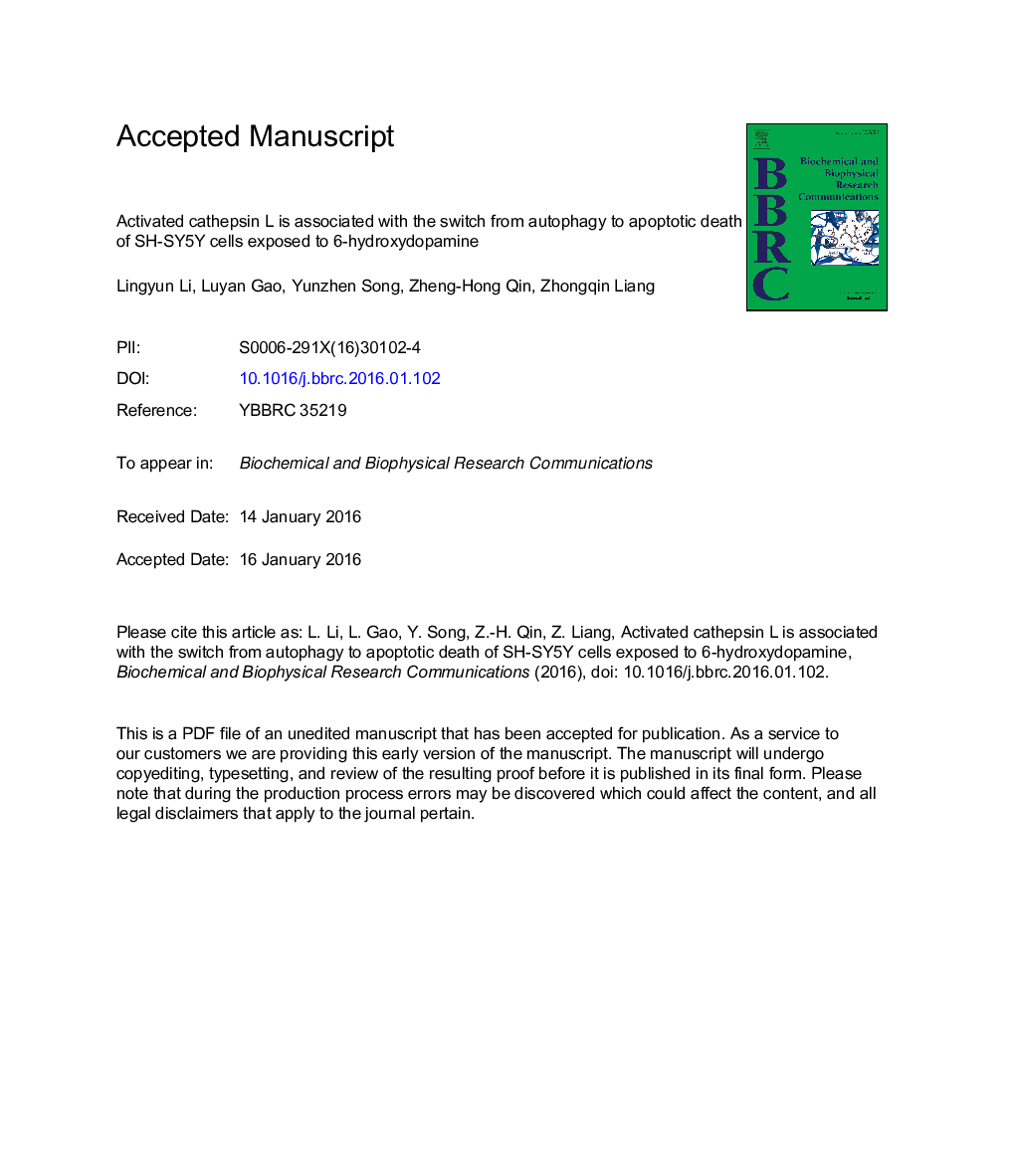| Article ID | Journal | Published Year | Pages | File Type |
|---|---|---|---|---|
| 10749053 | Biochemical and Biophysical Research Communications | 2016 | 25 Pages |
Abstract
Autophagy and apoptosis are common responses to pathological damage in the process of Parkinson's disease (PD), and lysosome dysfunction may contribute to the etiology of PD's neurodegenerative process. In this study, we demonstrated that the neurotoxin 6-hydroxydopamine (6-OHDA) increased autophagy in SH-SY5Y cells, as determined by detection of the lysosome marker lysosomal-associated membrane protein1, the autophagy protein light chain 3 (LC3)-II and the autophagy substrate P62 protein. Meanwhile, autophagy repression with 3-methyladenine accelerated the activation of caspase-3 and PARP and aggravated the cell apoptotic death induced by 6-OHDA. Furthermore, we found that 6-OHDA treatment resulted in a transient increase in the intracellular and nuclear expression of cathepsin L (CTSL). The CTSL inhibitor, Z-FY-CHO, could promote autophagy, decrease accumulation of P62, and block activation of caspase-3 and PARP. Taken together, these results suggest that activation of autophagy may primarily be a protective process in SH-SY5Y cell death induced by 6-OHDA, and the nuclear translocation of CTSL could enhance the cell apoptotic cascade via disturbing autophagy-apoptotic systems in SH-SY5Y cells. Our findings highlight the potential role of CTSL in the cross talk between autophagy and apoptosis, which might be considered a therapeutic strategy for treatment of pathologic conditions associated with neurodegeneration.
Related Topics
Life Sciences
Biochemistry, Genetics and Molecular Biology
Biochemistry
Authors
Lingyun Li, Luyan Gao, Yunzhen Song, Zheng-Hong Qin, Zhongqin Liang,
